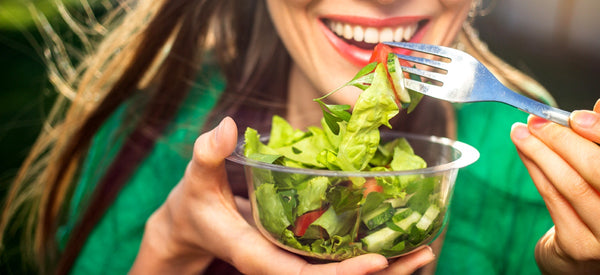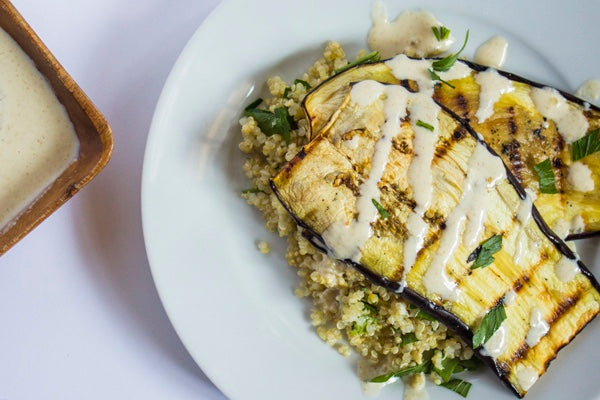


Have you been curious about the popular clean eating lifestyle, but not quite sure how to get started? This article will give you the fundamentals of clean eating so that you can start making healthier, more informed choices about the foods you eat.
Clean eating involves selecting foods that are in their whole, natural form, or close to it. These foods are minimally processed, which helps preserve the beneficial vitamins and minerals they provide. In addition, a clean eating lifestyle generally involves sustainable foods that are free of preservatives and harmful toxins.
What’s more, you don’t have to feel limited by a strict and confusing diet that only works for a short period of time. In fact, clean eating really isn’t a diet, at all. Think of it as a lifestyle choice. It’s simple, straightforward, and quite easy to maintain over time.
Of course, one of the most talked about advantages of switching to a clean eating plan is weight loss. Seeing the numbers on the scale fall is just one of the many amazing benefits of eating clean, however. In addition to weight loss, clean eating has been shown to benefit gastrointestinal functioning, reduce inflammation, improve mood, promote better cognitive functioning, enhance sleep quality, and lead to younger-looking, more radiant skin. Many find that clean eating also gives them more energy and greater productivity.
Many diet plans have a long list of do’s and don’ts that make them difficult to sustain over the long term. The simplicity of clean eating is one of the many reasons it works. All you need to do is identify a few small ways to make healthier changes into your life.
Buy foods that are naturally found in nature. This means no foods or snacks from packages or boxes. Real, whole foods haven’t undergone excessive processing or genetic modification. They include fresh produce, whole grains, grass-fed and free-range meats, dairy, and nuts and seeds. You’ll usually find these foods by sticking to the perimeter of your grocery store.
The key to eating clean is consuming foods in their natural state. To do this, you will need to be vigilant about reading labels. Many foods that seem healthy have tons of added ingredients like colors, preservatives, and sugars. Even nuts may be processed in hydrogenated oils. For that reason it’s best to purchase them in their raw form.
If you’re following a clean eating lifestyle, water should be your beverage of choice. The body needs water for proper organ functioning, and to keep skin lustrous and moisturized, so drink lots of it. Plus, when you reach for plain water, you won’t have to worry about the empty calories and added sugars found in many other beverages. Strive to drink your body weight in ounces daily.
Fresh produce should take up about half of the space on your plate at each meal. Fruits and vegetables are great sources of phytonutrients that fight off disease. Use a rainbow of colors in your meals, but make a commitment to cook with more greens like Swiss chard, collards, kale, and spinach. They contain dietary fiber that promotes healthy digestion and keeps you feeling full longer.
Sugar is harmful to the body in a variety of ways. Sugar is addictive in nature, which means you eat it, crash, and reach for more shortly after. Plus, sugar has no real nutrient profile, so it’s not really needed to maintain a healthy lifestyle. Steer clear of sugar in its many forms, even artificial sugar and sweeteners. Be sure to check your labels since sugar can hide behind a variety of different names.
Although red wine may offer some cardiovascular benefits, alcohol in general is basically empty calories—it has no nutrient profile. More importantly, alcohol has been linked to numerous health concerns, including liver disease. Coffee—without added sugar and cream—has also been associated with some health benefits. But, if you are sensitive to caffeine, it may be best to remove it from your clean eating plan.
Most meat and dairy sold in stores is sourced from factory farms where animals are raised in poor conditions. These animals are injected with antibiotics and hormones to influence their growth. Such animals (and their products) have a lower nutrient profile than meat sourced from grass-fed or free-range farms. Choose these options to be more consistent with the clean eating lifestyle.
If your budget allows for it, the best way to reduce your toxic load and truly eat clean is by purchasing organic foods. Certified organic foods typically retain all their nutrients, and may even have a more robust flavor than non-organic choices. In addition, by switching to organic, you’ll minimize you and your family’s exposure to pesticides, harmful chemicals, antibiotics, and hormones.
 BEAUTY
BEAUTY
 LIFESTYLE
LIFESTYLE
 RECIPES: VEGAN MAINS
RECIPES: VEGAN MAINS
Sign up today to receive weekly Beauty, Nutrition and Lifestyle tips, exclusive offers, and 10% off your first purchase.
Our beauty and wellness brand offers support, services and products to help you become WELL WITHIN your skin, mind and body.
Sign up today and receive your special Friends and Family 20% off your first purchase, valid until May 31, 2017.
Stay Ever Well,
Lynne + Renee
Co-founders
Thank you for signing up today to receive weekly Beauty, Nutrition and Lifestyle tips, exclusive offers and your special Friends and Family 20% off your first purchase, valid until May 31, 2017.
Stay Ever Well,
Lynne + Renee
Sign up today to receive weekly Beauty, Nutrition and Lifestyle tips, exclusive offers, and 10% off your first purchase.
Leave a comment
Comments will be reviewed prior to posting.